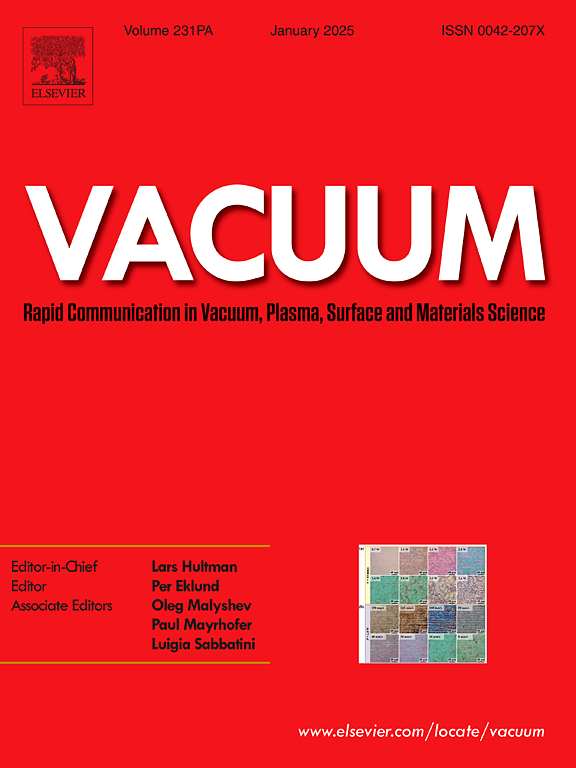Photocatalytic properties of thin ZnO films synthesised with plasma-enhanced atomic layer deposition at room temperature
IF 3.9
2区 材料科学
Q2 MATERIALS SCIENCE, MULTIDISCIPLINARY
引用次数: 0
Abstract
The deposition of thin active layer of zinc oxide (ZnO) on thermally sensitive substrates represents a major challenge. For this purpose, atomic layer deposition (ALD) is the most suitable deposition technique. Since both the growth rate and the quality of thin films synthesised by the conventional ALD method at temperatures near the room temperature are low, the plasma-enhanced version of the method (PEALD) is used at ambient temperatures, with which we increase the chemical reactivity of the precursors. In this work, we present the structural, optical and photocatalytic properties of thin ZnO films deposited by PEALD at room temperature. We show that the properties of the films strongly depend on the applied RF power of the plasma. The films synthesised with a plasma RF power below 200 W have an amorphous structure and a weaker photocatalytic activity. The films obtained with an RF power of 200 W or more consist of nano-sized crystallites. Compared to the amorphous films, they show significantly higher photocatalytic activity.

室温等离子体增强原子层沉积法制备ZnO薄膜的光催化性能
在热敏衬底上沉积薄的氧化锌活性层是一个主要的挑战。为此,原子层沉积(ALD)是最合适的沉积技术。由于传统ALD方法在接近室温的温度下合成的薄膜的生长速度和质量都很低,因此在环境温度下使用该方法的等离子体增强版本(PEALD),我们增加了前驱体的化学反应性。在这项工作中,我们研究了室温下PEALD沉积的ZnO薄膜的结构、光学和光催化性能。研究表明,薄膜的性能与等离子体施加的射频功率密切相关。在200 W以下的等离子体射频功率下合成的膜具有无定形结构和较弱的光催化活性。在200瓦或更高的射频功率下获得的薄膜由纳米尺寸的晶体组成。与非晶膜相比,它们表现出更高的光催化活性。
本文章由计算机程序翻译,如有差异,请以英文原文为准。
求助全文
约1分钟内获得全文
求助全文
来源期刊

Vacuum
工程技术-材料科学:综合
CiteScore
6.80
自引率
17.50%
发文量
0
审稿时长
34 days
期刊介绍:
Vacuum is an international rapid publications journal with a focus on short communication. All papers are peer-reviewed, with the review process for short communication geared towards very fast turnaround times. The journal also published full research papers, thematic issues and selected papers from leading conferences.
A report in Vacuum should represent a major advance in an area that involves a controlled environment at pressures of one atmosphere or below.
The scope of the journal includes:
1. Vacuum; original developments in vacuum pumping and instrumentation, vacuum measurement, vacuum gas dynamics, gas-surface interactions, surface treatment for UHV applications and low outgassing, vacuum melting, sintering, and vacuum metrology. Technology and solutions for large-scale facilities (e.g., particle accelerators and fusion devices). New instrumentation ( e.g., detectors and electron microscopes).
2. Plasma science; advances in PVD, CVD, plasma-assisted CVD, ion sources, deposition processes and analysis.
3. Surface science; surface engineering, surface chemistry, surface analysis, crystal growth, ion-surface interactions and etching, nanometer-scale processing, surface modification.
4. Materials science; novel functional or structural materials. Metals, ceramics, and polymers. Experiments, simulations, and modelling for understanding structure-property relationships. Thin films and coatings. Nanostructures and ion implantation.
 求助内容:
求助内容: 应助结果提醒方式:
应助结果提醒方式:


